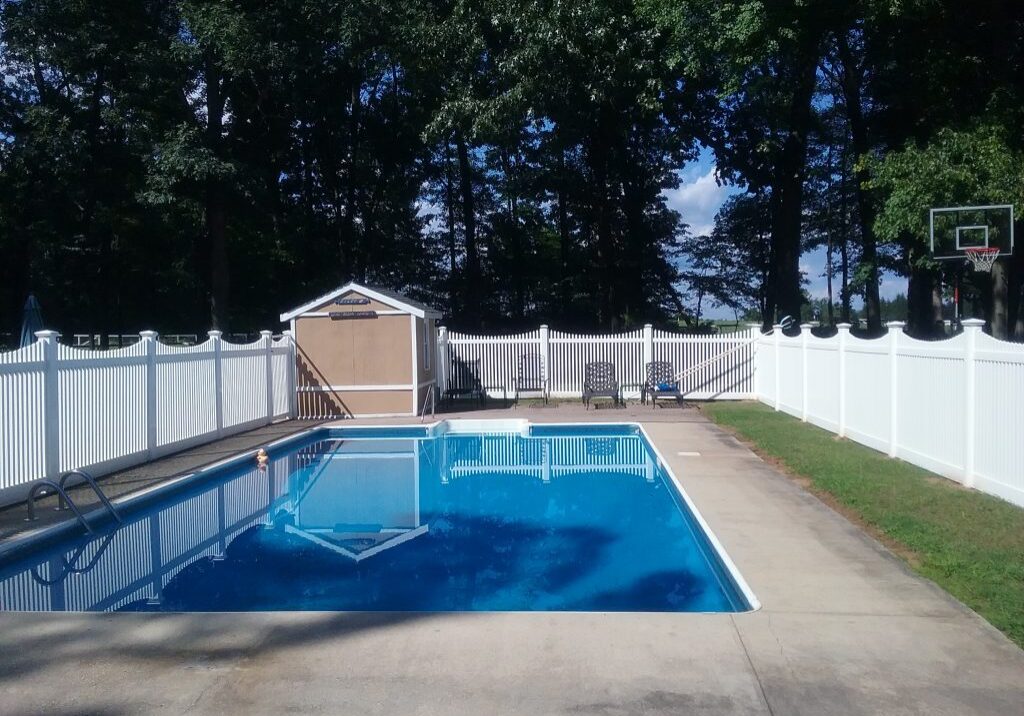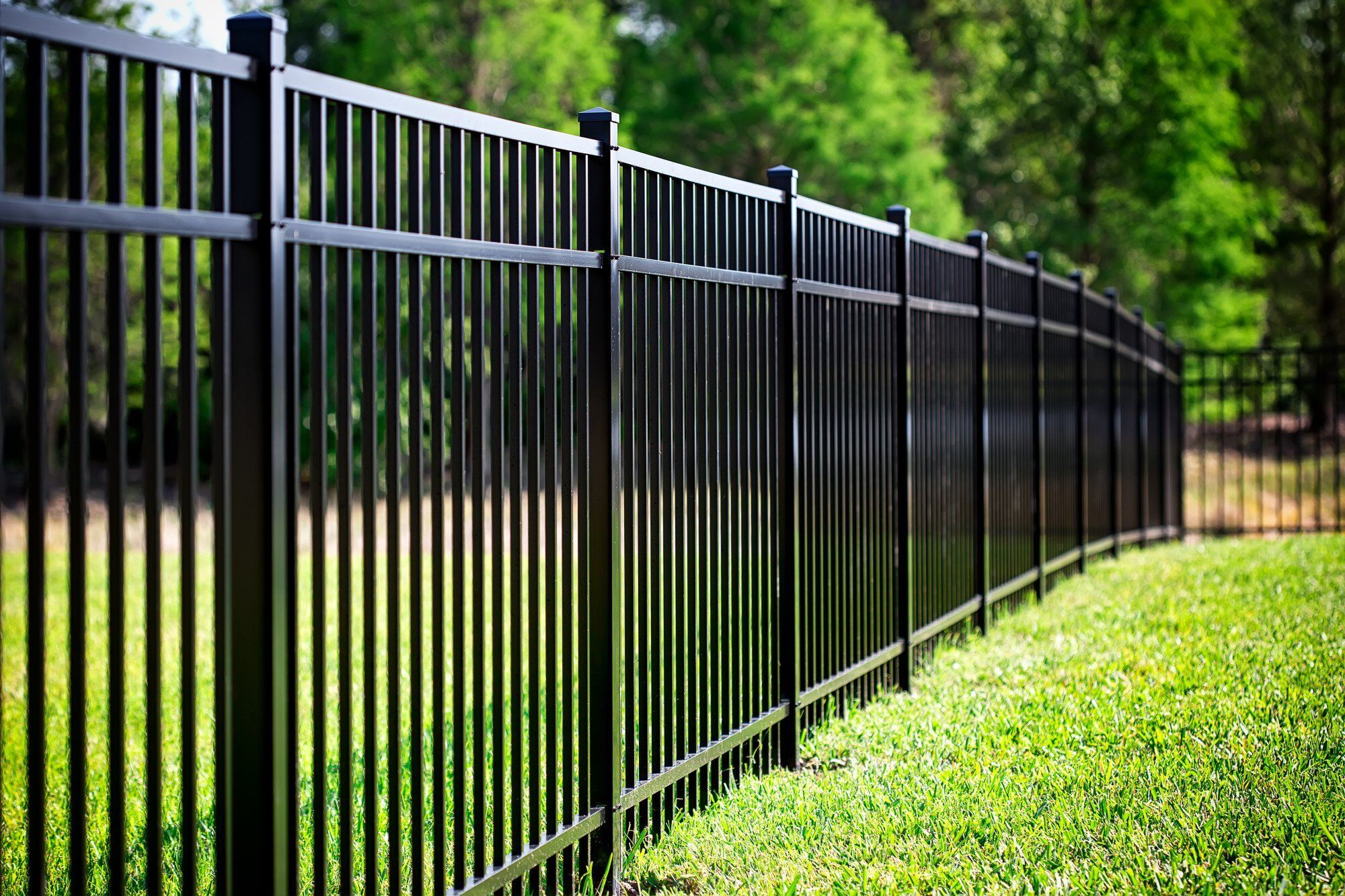All Categories
Featured
Your fence is a financial investment that supplies protection, visual, and personal privacy charm. Each fencing type has distinct upkeep needs based on its material's toughness, exposure to the aspects, and other aspects.
![]()
Weather Condition Defense: Use a top quality sealant or stain every 2-- 3 years to shield the timber from moisture and UV rays. For severe climates, annual reapplication may be necessary. Cleansing: Make use of a yard hose or a stress washer on a low setting to remove dust and mildew. Follow up with a mild detergent for persistent stains. Fixings: Check for loose or deteriorating boards and replace them immediately. Tighten up screws or nails to maintain the framework stable. Pest Control: Usage termite-resistant wood or deal with the fence with parasite repellents to stay clear of problems. 2. Plastic Fencings. Plastic fencings are popular for their longevity and very little upkeep needs.
Cleansing: Laundry the surface area with a garden tube or a mixture of soap and water to remove dirt and algae. For difficult spots, make use of a vinyl-specific cleanser or a soft-bristle brush. Evaluations: Consistently evaluate for cracks or warping, especially after heavy impacts or strong winds. Repair services: Replace any busted areas right away. Plastic fences frequently utilize modular parts, making repairs simple. 3. Chain-Link Fences. Chain-link fencings are tough and affordable but require periodic focus to avoid corrosion.
Corrosion Removal: Make use of a wire brush to get rid of corrosion from revealed areas, then use a rust-inhibiting spray to protect the steel. Cleaning: Hose down the fence consistently to remove dirt. For grime, use soapy water and a stiff-bristle brush. Repair services: Tighten up any drooping sections or change harmed web links to preserve safety and security. 4. Wrought Iron Fences. Wrought iron fencings supply sturdiness and beauty yet are prone to rust otherwise effectively maintained.
![]()
Rust Prevention: Remove rust areas with sandpaper and use a rust-resistant guide followed by outdoor steel paint. Inspect for corrosion at the very least two times a year. Cleaning: Clean down with a towel and soapy water to preserve the finish. Stay clear of unpleasant cleansers that can harm the surface. Painting: Paint every couple of years to secure the steel from rust and keep it looking fresh. 5. Light weight aluminum Fences. Aluminum fencings are light-weight, durable, and immune to corrosion, calling for less upkeep compared to functioned iron.
Cleaning: Tidy with soap and water to eliminate dirt and dirt. Rinse completely to avoid residue. Assessments: Look for loosened hardware or dents, especially after tornados. Protect or change components as needed. Touch-Ups: Apply paint to damaged or cracked areas to stop damage to the protective covering. 6. Composite Fences. Compound fences are made from a blend of wood and plastic, integrating toughness with marginal upkeep.
![]()
Cleansing: Use a tube or a soft brush with soap and water to clean up the surface area. Prevent utilizing harsh chemicals. Assessments: Search for bending, especially in severe warm. Tighten or change any type of broken panels. Build Avoidance: While composite materials stand up to rot, maintain the fencing completely dry and tidy to avoid mold accumulation. 7. Bamboo Fences. Bamboo is an environment-friendly option however calls for careful maintenance to keep its appearance and longevity.
Securing: Use a safety sealant or varnish every 2-- 3 years to protect versus moisture and UV damage. Cleaning: Clean with moderate soap and a soft sponge or brush. Avoid high-pressure washing, which can harm bamboo fibers. Fixings: Change harmed sections or poles to keep architectural honesty and appearance. General Maintenance Tips for All Fence Kind. Normal Evaluations: Inspect your fencing a minimum of once every period for damages, wear, or loose components. Trimming Plant Life: Keep plants, hedges, and vines far from the fence to stop dampness damage and decrease parasite task. Seasonal Modifications: In regions with snow, avoid stacking snow against your fencing to avoid architectural stress. In warm environments, evaluate for heat-related warping or fading. Final thought. Each secure fencing material has its special maintenance demands, yet a positive approach to care can prolong its lifespan and keep it looking its finest. Wood fencings need more focus contrasted to vinyl or light weight aluminum, but each product advantages from regular cleaning, inspections, and prompt repair work. By tailoring your maintenance techniques to the sort of fence you possess, you'll ensure that it proceeds to give privacy, visual, and security appeal for many years to come.

- Wood Fences. Wood fences are valued for their all-natural look yet require regular upkeep to stop damages.
Weather Condition Defense: Use a top quality sealant or stain every 2-- 3 years to shield the timber from moisture and UV rays. For severe climates, annual reapplication may be necessary. Cleansing: Make use of a yard hose or a stress washer on a low setting to remove dust and mildew. Follow up with a mild detergent for persistent stains. Fixings: Check for loose or deteriorating boards and replace them immediately. Tighten up screws or nails to maintain the framework stable. Pest Control: Usage termite-resistant wood or deal with the fence with parasite repellents to stay clear of problems. 2. Plastic Fencings. Plastic fencings are popular for their longevity and very little upkeep needs.
Cleansing: Laundry the surface area with a garden tube or a mixture of soap and water to remove dirt and algae. For difficult spots, make use of a vinyl-specific cleanser or a soft-bristle brush. Evaluations: Consistently evaluate for cracks or warping, especially after heavy impacts or strong winds. Repair services: Replace any busted areas right away. Plastic fences frequently utilize modular parts, making repairs simple. 3. Chain-Link Fences. Chain-link fencings are tough and affordable but require periodic focus to avoid corrosion.
Corrosion Removal: Make use of a wire brush to get rid of corrosion from revealed areas, then use a rust-inhibiting spray to protect the steel. Cleaning: Hose down the fence consistently to remove dirt. For grime, use soapy water and a stiff-bristle brush. Repair services: Tighten up any drooping sections or change harmed web links to preserve safety and security. 4. Wrought Iron Fences. Wrought iron fencings supply sturdiness and beauty yet are prone to rust otherwise effectively maintained.

Rust Prevention: Remove rust areas with sandpaper and use a rust-resistant guide followed by outdoor steel paint. Inspect for corrosion at the very least two times a year. Cleaning: Clean down with a towel and soapy water to preserve the finish. Stay clear of unpleasant cleansers that can harm the surface. Painting: Paint every couple of years to secure the steel from rust and keep it looking fresh. 5. Light weight aluminum Fences. Aluminum fencings are light-weight, durable, and immune to corrosion, calling for less upkeep compared to functioned iron.
Cleaning: Tidy with soap and water to eliminate dirt and dirt. Rinse completely to avoid residue. Assessments: Look for loosened hardware or dents, especially after tornados. Protect or change components as needed. Touch-Ups: Apply paint to damaged or cracked areas to stop damage to the protective covering. 6. Composite Fences. Compound fences are made from a blend of wood and plastic, integrating toughness with marginal upkeep.

Cleansing: Use a tube or a soft brush with soap and water to clean up the surface area. Prevent utilizing harsh chemicals. Assessments: Search for bending, especially in severe warm. Tighten or change any type of broken panels. Build Avoidance: While composite materials stand up to rot, maintain the fencing completely dry and tidy to avoid mold accumulation. 7. Bamboo Fences. Bamboo is an environment-friendly option however calls for careful maintenance to keep its appearance and longevity.
Securing: Use a safety sealant or varnish every 2-- 3 years to protect versus moisture and UV damage. Cleaning: Clean with moderate soap and a soft sponge or brush. Avoid high-pressure washing, which can harm bamboo fibers. Fixings: Change harmed sections or poles to keep architectural honesty and appearance. General Maintenance Tips for All Fence Kind. Normal Evaluations: Inspect your fencing a minimum of once every period for damages, wear, or loose components. Trimming Plant Life: Keep plants, hedges, and vines far from the fence to stop dampness damage and decrease parasite task. Seasonal Modifications: In regions with snow, avoid stacking snow against your fencing to avoid architectural stress. In warm environments, evaluate for heat-related warping or fading. Final thought. Each secure fencing material has its special maintenance demands, yet a positive approach to care can prolong its lifespan and keep it looking its finest. Wood fencings need more focus contrasted to vinyl or light weight aluminum, but each product advantages from regular cleaning, inspections, and prompt repair work. By tailoring your maintenance techniques to the sort of fence you possess, you'll ensure that it proceeds to give privacy, visual, and security appeal for many years to come.
Latest Posts
Find Montclare Auto Repair’s Most Popular Auto Repairs and Why Drivers Choose Them
Published en
1 min read
Shield Your Home with High Quality Residential Roof
Published en
1 min read
Uncover Budget-Friendly Auto Repairs with Montclare’s Exclusive Service Specials
Published en
1 min read
More
Latest Posts
Find Montclare Auto Repair’s Most Popular Auto Repairs and Why Drivers Choose Them
Published May 23, 25
1 min read
Shield Your Home with High Quality Residential Roof
Published May 22, 25
1 min read
Uncover Budget-Friendly Auto Repairs with Montclare’s Exclusive Service Specials
Published May 22, 25
1 min read